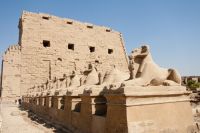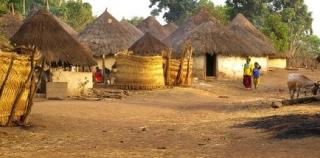
Exploring the history and experiences of mixed heritage persons and inter-racial relationships across the world

Exploring the history and experiences of mixed heritage persons and inter-racial relationships across the world
The following countries will be covered in greater detail in this section : Cape Verde, São Tomé and Príncipe, Angola, South Africa, Zimbabwe, Mozambique, Tanzania, Zanzibar and the Seychelles.
 It is difficult to discuss Africa without splitting the continent into two - Arab North Africa which usually is regarded as part of the Arab world with influence for the Ottoman Empire and the Islamic religion and Sub-Saharan Africa. In terms of colonisation, the European powers were just as eager to get their paws on North Africa. The Arab Africans, though, already had quite a history with Europe for example; the Moors occupied the Iberian Peninsula for a few hundred years which was followed by years of Arab raids on the coastal towns of Europe resulting in a few hundred thousand Europeans being taken as slaves. The Arab world also had centuries old trading with the rest of Africa across the Sahara desert and along the eastern coast resulting in Arab/Islamic influences spreading as far south as Mozambique. Many times the commodity being traded was slaves.
It is difficult to discuss Africa without splitting the continent into two - Arab North Africa which usually is regarded as part of the Arab world with influence for the Ottoman Empire and the Islamic religion and Sub-Saharan Africa. In terms of colonisation, the European powers were just as eager to get their paws on North Africa. The Arab Africans, though, already had quite a history with Europe for example; the Moors occupied the Iberian Peninsula for a few hundred years which was followed by years of Arab raids on the coastal towns of Europe resulting in a few hundred thousand Europeans being taken as slaves. The Arab world also had centuries old trading with the rest of Africa across the Sahara desert and along the eastern coast resulting in Arab/Islamic influences spreading as far south as Mozambique. Many times the commodity being traded was slaves.
 In the Arab world, because in some cases the Islam was interpreted to permit sexual relations between a male master and his female slave outside of marriage, many mixed race children resulted from relationships with both black and white slaves. When a slave mother became a mother of her master's children, she was accorded special privileges and her child would have prospered from the wealth of the father and in some cases have been given rights of inheritance. Assimilation of future generations is virtually guaranteed in situations like this.
In the Arab world, because in some cases the Islam was interpreted to permit sexual relations between a male master and his female slave outside of marriage, many mixed race children resulted from relationships with both black and white slaves. When a slave mother became a mother of her master's children, she was accorded special privileges and her child would have prospered from the wealth of the father and in some cases have been given rights of inheritance. Assimilation of future generations is virtually guaranteed in situations like this.
This acceptance of mixed heritage children in Islamic society does make it difficult to pin-point individual social grouping of mixed cultural communities. Afro-Turks or African Turks are people of African descent in Turkey who appear to be an exception to the rule are descendants of plantation slaves who appear to have a maintained some kind of separate identity. It is arguable that the French Algerians known as the 'Pied Noir' may have included people of mixed race but is highly unlikely given Islam's strictness about women's sexual behaviour.
By the end of the 19th century, European nations controlled only 10 percent of the continent. By 1914, with the annexation of Egypt by the British, all of Africa save Liberia and Ethiopia were officially colonies. The "Congo Conference" of 1884-85 in Germany tried to set up the rules by which a country could claim an African colony termed the 'The Principle of Effectivity'. The coloniser had to have treaties with local chiefs, fly their flag there and have economical activities there. Additionally if an administration system was set up, a police force had to be created to keep order.
 The result of this carve-up in Sub-Saharan Africa led to a two tier type of colonies - settler and non-settler which would later affect the future of those colonies particular during the de-colonisation period. It was in the settler colonies that the mixing of the races was more likely to result in a distinguishable community. In non-settler colonies, any inter-racial offspring were likely to be assimilated into the local population and any evidence would likely have disappeared in two or three generations.
The result of this carve-up in Sub-Saharan Africa led to a two tier type of colonies - settler and non-settler which would later affect the future of those colonies particular during the de-colonisation period. It was in the settler colonies that the mixing of the races was more likely to result in a distinguishable community. In non-settler colonies, any inter-racial offspring were likely to be assimilated into the local population and any evidence would likely have disappeared in two or three generations.
Probably the first of the identifiable mixed heritage communities started in the Cape of Good Hope and were originally known as Bastaards or Basters. Despite the pride by which this name was held, the British found this word offensive despite and called them Griqua due to their relatedness to the Chariguriqua, a Cape native Khoikhoi group. The Griqua/Basters are regarded as a subcategory of the more general Southern African mixed race 'Coloured' community.
Despite all being called Coloureds, there are some further differences. The Cape Coloured or Malay Coloured where mainly descendants of imported non-European labour from places like India, Malay and Indonesia and the Dutch/Afrikaner. In other parts of South African, the mix is likely to be between one of the Bantu tribes such as Zulu and the British. The Zimbabwean Coloured is a mix of European usually British and either Ndebele or Shona. Even between these two groups there are some differences. Bear in mind that many people who consider themselves Coloured may be two, three or even four generations from the original mixed relationship and the community has been generally maintained by marriages between Coloureds. This re-mixing means that these people are genetically very varied more so in the Cape.
In Namibia, the Basters maintain a separate identity from the rest of the Coloured community who tend to be a European/ Khoisan and the term is also used in Swaziland.
Kenya's lack of mineral wealth compared to South Africa and the Rhodesian federation meant that only some 30,000 white settlers farmed in the interior central highlands. After the war, young, upper-class British officers with some ?1000 in assets could get a free 1000 acre farm to encourage immigration but the upper-class bias meant that Europeans remained a small minority with many of them leaving at independence. They left no trace of a 'Coloured' like community.
 Côte d'Ivoire (Ivory Coast) stood out as the only 'settler' West African country. The profitable plantations were in the hands of French citizens and a forced-labour system was required to support this large part of the economy. Some 4% of the population is of non-African ancestry currently mainly of French decendants and there does not appear to be a sizeable mixed heritage community despite the original high level of European settlement.
Côte d'Ivoire (Ivory Coast) stood out as the only 'settler' West African country. The profitable plantations were in the hands of French citizens and a forced-labour system was required to support this large part of the economy. Some 4% of the population is of non-African ancestry currently mainly of French decendants and there does not appear to be a sizeable mixed heritage community despite the original high level of European settlement.
Prior to independence, Angola had a community of half a million Portuguese of which 30,000 remain. Approximately 2% of the population are mestiços which translates to arguably the largest mixed race community of over 350,000 individuals most of whom are urban dwellers. It is not very clear whether this designation applies only to Portuguese descendants as some 50,000 Cubans, mostly male, lived and worked there for some time. Of the Portuguese colonies in Africa, Mozambique has the smallest group of mixed heritage people. Many will have left at independence being assimilados and having been granted Portuguese citizenship. The other Portuguese African colonies were the long term trading posts of Cape Verde and São Tomé and Príncipe where a significant percentage of the population are of mixed race.
In all the settled colonies of Sub-Saharan Africa, slaves, workers and artisans from the Indian sub-continent where imported mainly to work on projects where the indigenous population were reluctant to for example on the railroads. Many of these people remained in Africa but the amount of inter-racial mixing, due mainly to cultural and religious limitations, remained very low. It remains to see with tighter immigration controls and the fact that many are 3rd or 4th generation whether this situation will continue.
The mixed heritage populations discussed in this article relate mainly to historical communities that have remained somewhat distinct. However, a new breed of mixed heritage persons is gradually growing from new inter-racial couplings, the result of migrations, relationships that are more akin to the sort of things happening in Europe and the USA. It will be interesting to investigate how these integrate or not with the older communities.